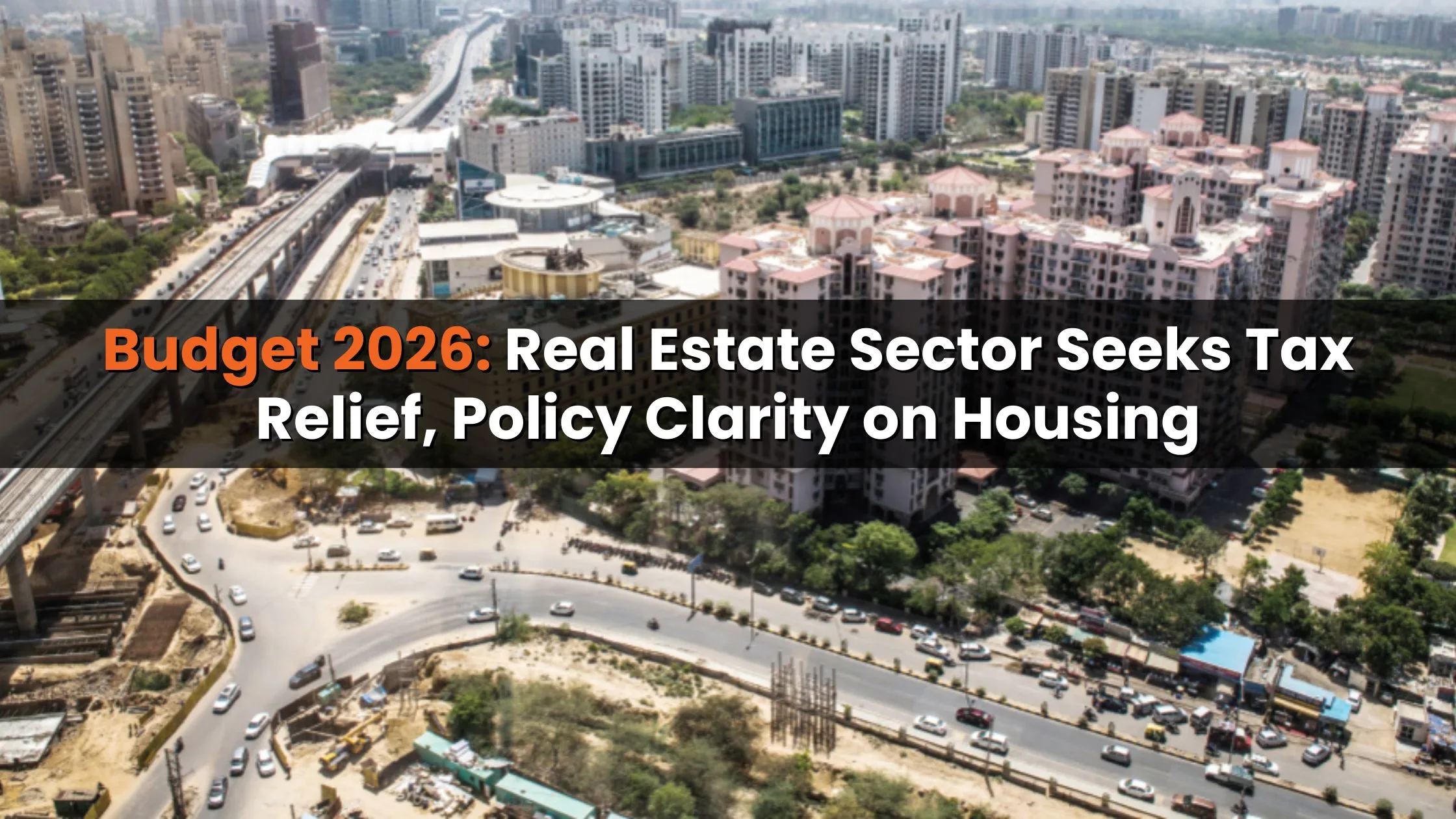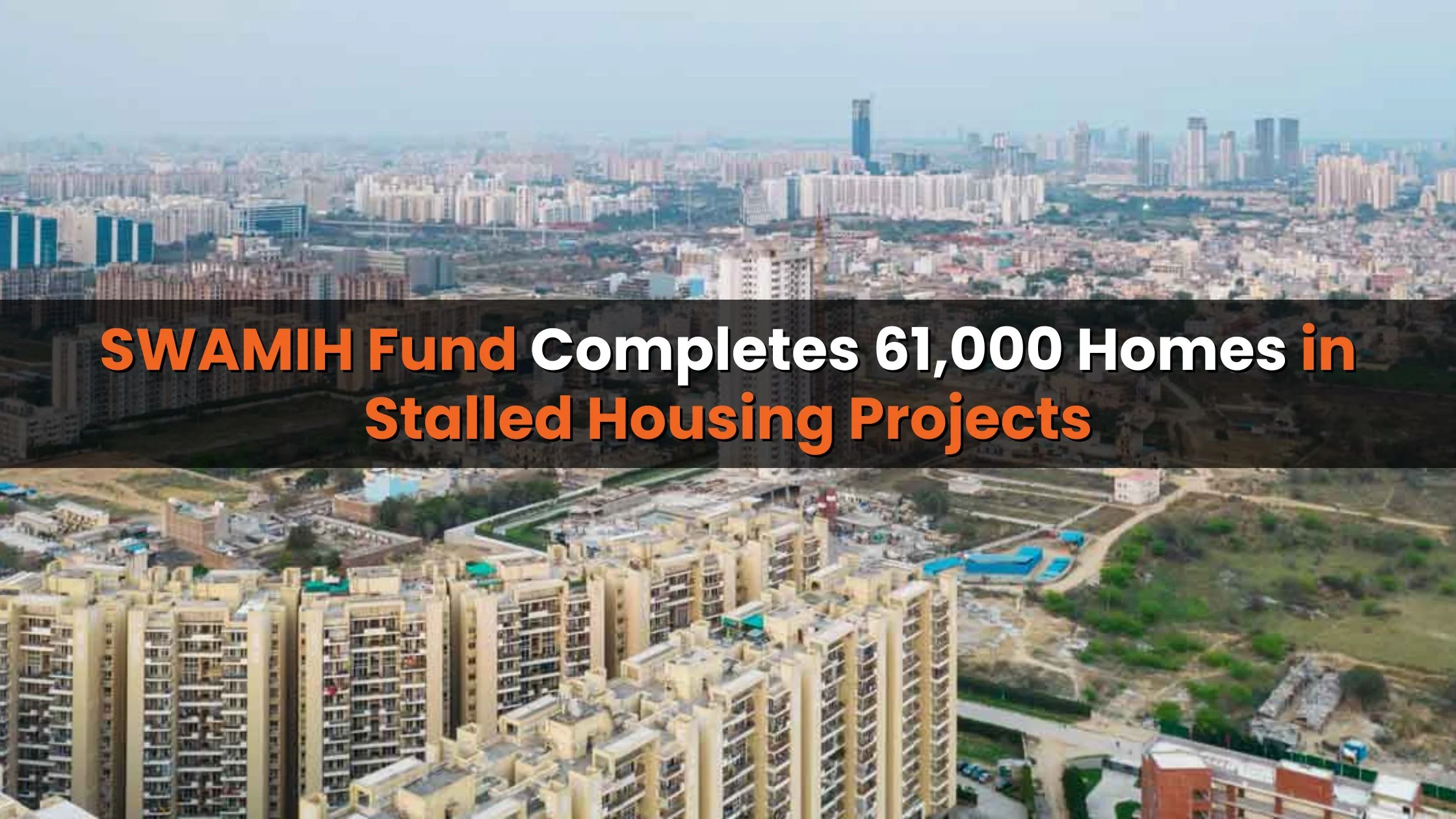Table of Content
- New Supply Coming After a Decade
- Key Demand Drivers of the Delhi Office Market
- Retail Leasing Trends Strengthening Delhi’s Commercial Real Estate
- Delhi’s Office Micro-Markets and Future Projects
- Economic Backbone Supporting the Delhi Office Market
- Residential Market Momentum in Delhi-NCR
- Expert Insights & Market Outlook
- Conclusion
After years of sluggish additions, the Delhi office market is gearing up for a strong revival. Between 2025 and 2027, nearly 5 million sq ft of new office supply is expected to come online across key micro-markets, signaling the end of a decade-long lull. According to CBRE’s recent report released at the CII Delhi Real Estate Summit 2025, this surge will reshape the capital’s commercial real estate landscape and provide much-needed space for expanding businesses.
The supply pipeline is concentrated in strategic hubs like Netaji Subhash Place, Rohini, Gateway District, and Aerocity. The revival is not only a response to robust demand from corporates but also an outcome of supportive infrastructure development and Delhi’s growing role as a global business hub.
New Supply Coming After a Decade
Delhi has not seen significant fresh office supply since 2016, largely due to land constraints and regulatory challenges. Developers had slowed down launches, and occupiers increasingly shifted to neighboring Gurugram and Noida, where Grade A office projects were readily available.
Now, the Delhi office market is making a comeback. A pipeline of nearly 5 million sq ft will be delivered between 2025 and 2027, with large-scale projects expected to change the city’s commercial skyline. These include:
- Netaji Subhash Place is emerging as a new business hub for corporates.
- Rohini is tapping into growing demand in North Delhi.
- Gateway District and Aerocity are strengthening Delhi’s position as an international business destination with premium developments.
This fresh wave of supply marks a significant turnaround, offering companies high-quality workspaces within Delhi city limits after years of constrained availability.
Also Read: Are Rising Real Estate Prices Pushing Middle-Class Indians Away from Homeownership?
Key Demand Drivers of the Delhi Office Market
One of the strongest indicators of recovery in the Delhi office market has been leasing activity. In the first half of 2025 alone, Delhi recorded absorption of around 400,000 sq ft of office space.
The top sectors driving this demand include:
- Research, consulting, and analytics – accounting for 39% of leasing.
- Flexible workspace operators – contributing 23% as co-working continues to thrive.
- Banking, financial services, and insurance (BFSI) – taking up 18% of space.
Together, these three sectors represented nearly 80% of leasing activity in H1 2025. The dominance of flexible workspaces also highlights the ongoing shift in occupier preferences toward hybrid working models.
For multinational companies, Delhi remains an attractive choice due to its connectivity, government presence, and status as the national capital. The upcoming supply is expected to meet this pent-up demand while offering occupiers a broader choice of premium projects.
Retail Leasing Trends Strengthening Delhi’s Commercial Real Estate
While the Delhi office market is witnessing a supply resurgence, retail real estate is also seeing healthy momentum. During January–June 2025, Delhi recorded retail space absorption of approximately 230,000 sq ft.
Key highlights:
- High streets dominated retail leasing with a 72% share.
- Fashion and apparel retailers led demand with 35% of total absorption.
- Homeware and department stores followed with 20%.
- Food and beverage operators accounted for 17%, underscoring the rise of experiential dining.
The strong performance of high streets reflects evolving consumer behavior, driven by lifestyle-oriented and experience-based shopping. The entry of global luxury brands, coupled with rising disposable incomes, is also reshaping Delhi’s retail market. Together, the trends in office and retail leasing point to an integrated cycle of growth for commercial real estate in the capital.
Delhi’s Office Micro-Markets and Future Projects
Delhi’s commercial property landscape is structured around well-defined micro-markets. Among these, the Central Business District (CBD) and Secondary Business Districts (SBD 2 and 3) continue to attract top occupiers.
Upcoming supply is heavily concentrated in SBD 2 and 3, with landmark projects including:
- Worldmark 4, 5, and 6 – set to redefine Aerocity’s positioning as a global business hub.
- Prestige Trade Centre – bringing premium-grade office spaces to the city.
These projects are expected to boost the Delhi office market by offering world-class facilities, sustainability features, and superior design. Their strategic locations ensure excellent connectivity to major residential and transportation hubs, further enhancing their appeal to occupiers.
Economic Backbone Supporting the Delhi Office Market
Delhi’s ability to sustain a growing commercial property market is backed by its strong economic fundamentals. The city is powered by a diverse services sector that includes:
- Information Technology (IT) and telecommunications
- Banking, financial services, and insurance (BFSI)
- Tourism, education, and real estate
- A significant public sector and government employment base
As the national capital, Delhi offers an unparalleled strategic advantage. Its transportation infrastructure, skilled workforce, and role in policymaking make it a magnet for domestic and global businesses alike.
This solid economic foundation ensures that the upcoming 5 million sq ft of supply in the Delhi office market will be absorbed in line with business expansion needs.
Residential Market Momentum in Delhi-NCR
Delhi’s real estate growth is not confined to the commercial segment. The residential market in Delhi-NCR has also performed exceptionally well in the first half of 2025.
- Nearly 21,000 new units were launched in H1 2025, marking a 35% increase year-on-year.
- Sales figures matched launches, with 21,000 units sold during the same period.
- The luxury (18%), premium (26%), and high-end (31%) segments together accounted for 75% of total sales.
South-East and South-West Delhi witnessed sharp appreciation in capital values, fueled by limited supply and strong demand. Major infrastructure projects, such as metro expansions and new expressways, are expected to drive growth in emerging residential pockets.
This parallel momentum in both office and residential segments demonstrates a balanced, multi-sectoral expansion of Delhi’s property market.
Also Read: Credai Pushes for Land Reforms, Digital Registry, and Land Banks to Drive Housing Growth
Expert Insights & Market Outlook
According to CBRE’s leadership, the Delhi office market is moving into a more mature growth phase. Key trends shaping the future include:
- Focus on amenities, design, and sustainability – occupiers are no longer looking at location alone but demand modern, eco-friendly, and well-planned workspaces.
- Market maturity due to stronger regulations – reforms and transparency have boosted investor confidence.
- Guidance from Delhi Master Plan 2041 – providing a structured roadmap for sustainable growth.
Anshuman Magazine, Chairman and CEO (India, South-East Asia, Middle East & Africa) at CBRE, highlighted that Delhi is no longer just recovering but evolving into a more affluent and resilient market. This evolution is attracting both domestic and foreign investments, ensuring the city plays a pivotal role in India’s long-term real estate growth story.
Conclusion
The Delhi office market is set for its strongest revival in a decade, with 5 million sq ft of fresh supply scheduled between 2025 and 2027. Supported by rising corporate demand, evolving retail trends, and strong residential momentum, the capital’s real estate ecosystem is entering a phase of high-quality, sustainable growth.
With premium projects reshaping micro-markets, global brands expanding their presence, and the Delhi Master Plan 2041 guiding structured development, Delhi is firmly positioned as a future-ready hub for both businesses and residents.
For investors, occupiers, and homebuyers alike, the coming years in Delhi present a unique opportunity to be part of a transformative growth cycle.

_1758004109.webp)







Ans 1. After nearly a decade of limited new projects, Delhi is adding 5 million sq ft of office supply between 2025 and 2027, supported by strong corporate demand and infrastructure upgrades.
Ans 2. Most of the upcoming projects are concentrated in Netaji Subhash Place, Rohini, Aerocity, and the Gateway District.
Ans 3. Land constraints and regulatory hurdles slowed development, pushing many companies toward Gurugram and Noida.
Ans 4. Research and consulting, flexible workspaces, and BFSI together accounted for nearly 80% of leasing in the first half of 2025.
Ans 5. Retail leasing touched 230,000 sq ft in H1 2025, with high streets dominating and fashion, homeware, and F&B leading demand.
Ans 6. Worldmark 4, 5, and 6 in Aerocity and Prestige Trade Centre are among the major premium projects in the pipeline.
Ans 7. Its proximity to the airport, premium infrastructure, and global positioning make Aerocity a preferred choice for corporates.
Ans 8. Around 21,000 new units were launched and sold in H1 2025, with luxury, premium, and high-end segments dominating sales.
Ans 9. A strong services sector, government presence, and diverse employment base provide a solid foundation for both office and residential absorption.
Ans 10. With new supply, strong demand, and guidance from the Delhi Master Plan 2041, the city is poised for sustainable and investor-friendly growth.